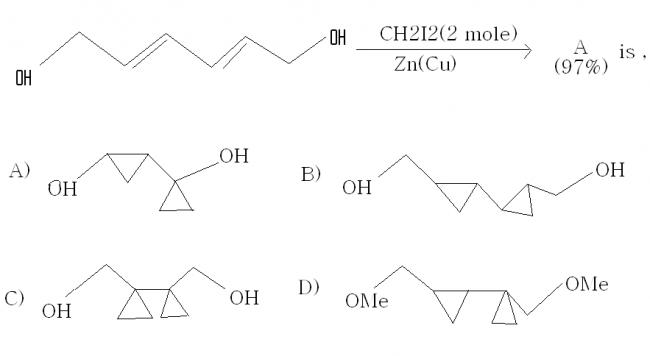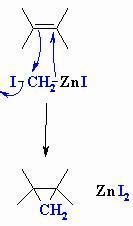ans: C
14 Answers
So ishan ur ans is correct.Pleasse post me the solution aince i don't know how to solve it.
i solved it using symmetry
if u use symmetry there is not much to solve as there is only one symmetrical product amongst the given options
symmetry works for me in max no of questions
remember if a path is extremely long and twisted there exists another path connected to the begining u just need to find it
yaar C mein cyclopropane groups ko ulta nahi laga diya tumne manmay? This is Simmons-Smith reaction, iska mechanism fully clarified nahi hai, a carbene or carbenoid is supposed to be involved. It is used to form cyclopropane rings from alkenes.
I mean the triangles will have their base on the carbon chain, and not their vertices on the chain, if you get what I mean.
SO ACCORDING TO U TAPAS, (b) MUST HAVE BEEN THE ANSWER.......
That was exactly my point....tapas is right.
I was looking for the mech, and found it in my fiitjee package. its the same.
SO THE ANS MIGHT BE WRONG IN THE BOOK.....
I THINK ANS IS (b)

